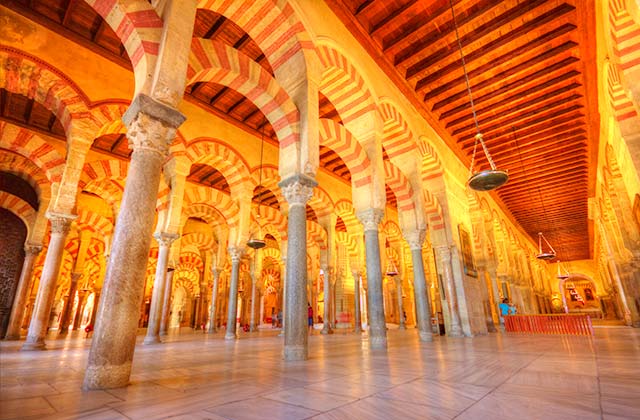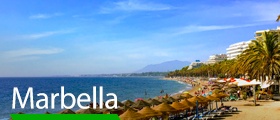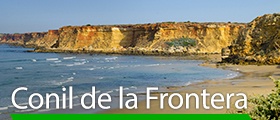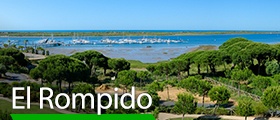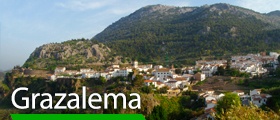
Andalucia, a world heritage site jewel
In the 1980s, Romero San Juan sang about Andalucia: “God made the world in six days and on the seventh he rested, and as he rested he dreamt that it was lacking joy and from this dream he created Andalucia.” All you need to do is take a look to realise how bewitching each corner of Andalucia is. The value its monuments, art and nature have make it a geographic jewel worthy of admiration. It’s not surprising that the United Nations Educational, Scientific and Cultural Organisation (Unesco) have considered declaring up to seven places in Andalucia World Heritage Sites. Don’t miss this tour that we have for you today because it talks about those Andalucian Unesco heritage enclaves that will awaken your most exquisite delight in beauty.
1. The Alhambra, Generalife and the Albaicin of Granada

Alhambra, Granada
This is one of the most beautiful monuments ever created in the Islamic world and is testimony to the incalculable value of the the Al Andalus era. Its walls are lined with thousands of inscribed verses and the Andalucian art and gardens that serve as decorations reflect the magnificence of the time. The fortaleza roja, or Red Fort, as it is known, is located on the La Sabika Mountain, where you can witness a view of the entire city of Granada.
The Generalife is a rural village that adds to the area’s historic and artistic profile, where ornamental gardens and architecture are integrated into the area around the Alhambra, adding to the beauty of the entire environment. When visiting this World Heritage Site, we cannot forget to visit Albaicin. This neighbourhood of narrow cobbled streets represents one of the most characteristic areas of the city, offering the chance to glimpse one of the most beautiful views in Spain from the St. Nicholas Mirador, or look-out. If you come to Granada so you don’t miss out on what one former president of the United States called the most beautiful sunset in the world.
2. The Historic Centre of Cordoba
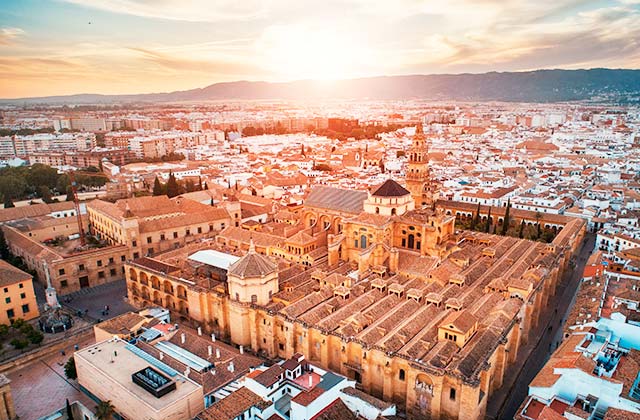
Centro Histórico de Córdoba
The true, universal value of Cordoba’s historic centre is its wealth of monuments from such a broad mix of different cultures. From the Roman period, we can see the bridge over the Guadalquivir River, in addition to the mosaics of the Alcázar and the columns of the Temple of Claudius Marcellus. From the Islamic period, we can find the central mosque and Jewish neighbourhood. The culmination of the city’s Christian history can be found in the Alcazar de los Reyes Cristianos and the Calahorra. After an interesting journey through history, the city is known as the Caliphate of Al Andalus. In fact it is precisely one of the monuments from this period – the mosque – that has emerged as the most important and most visited in the city.
Although it was later converted into a cathedral, this structure remains one of the most important examples of Andalucian Islamic art. A curiosity of this Cordovan monument is the Qibla Wall, which is not oriented towards Mecca – as Qilbas usually are – but 51º further south. If you have the opportunity to visit the area, stop by Cordoba for a walk that will immediately feel like walking through a museum.
3. The Cathedral, the Alcázar and Archivo de Indias in Seville
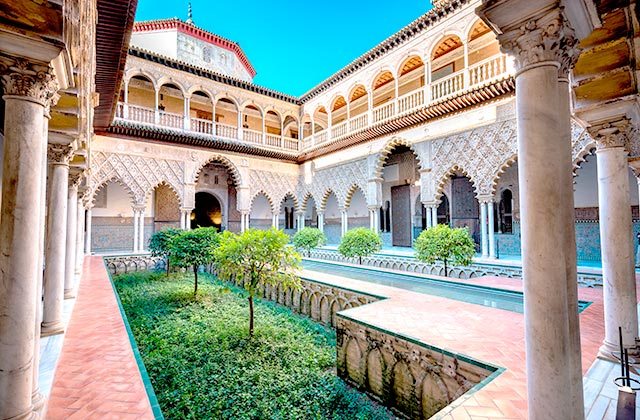
Real Alcázar, Sevilla
The Andalcian capital has a special charm that leaves no one unchanged by a visit. Each one of the city’s UNESCO World Heritage Site monuments signifies a period in the city’s history. The Gothic Cathedral of Seville is the world’s largest. While there are many elements that can and should be stressed about the city, one has emerged as the symbol of Sevilla: the Giralda. Once an Almohade minaret above the old mosque, the tower was transformed with the integration of a bell. Meanwhile, if you find yourself visiting the city, you cannot miss out on an approach to the Alcazar, the set of palaces surrounded by a wall that will take you back to the Dark Ages. Before leaving Sevilla, one should make an effort to see the Archivo General de Indias. More than an architectural attraction, this site has earned a place of importance for its role in a time of historical change in Spain. Here one can find a centralised collection of all documents related to the administration and trade with the Spanish colonies in the Americas. If you are able to visit Sevilla, don’t miss out on the chance to enjoy these and all the other charming treasures the city has to offer.
4. The Renaissance Monumental Complex of Ubeda and Baeza (In Jaén)
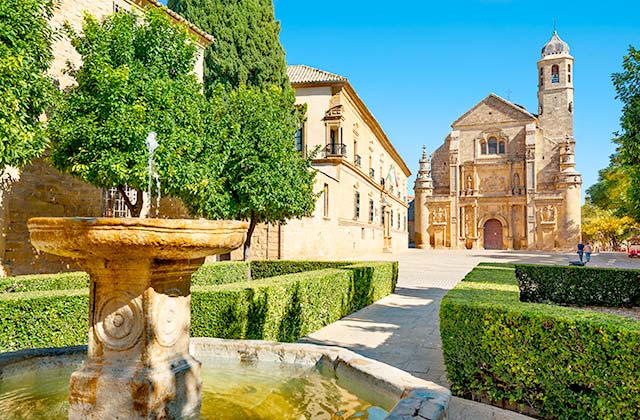
Capilla de El Salvador, Úbeda
The Renaissance monuments of Ubeda and Baeza are located both in the historical centres of each town. These two municipalities, separated only by 9 kilometres, have grown in parallel since each experiencing a heyday during the Renaissance period. Ubeda, also known as the city of ” the hills”, contains a set of significant buildings showcasing the work of Andrew Vandelvira, around which some of the most important religious monuments of the time can be found, including the Holy Chapel of El Salvador and the Church of Santa Maria de los Reales Alcazares. Meanwhile, Baeza also hosts some important examples from its past, just after the Reconquista. The cathedral in the Plaza de Santa Maria is a historical treasure with a university buildings, an old seminary and the College of the Jesuits. In this city, you can also find an important example of plateresco art with the facade of the town hall, a former prison from the 16th century. If you are drawn to this area by the Renaissance treasures, be sure to sample another of Jaen’s highpoints: Olive Oil.
5. The Doñana Natural Park
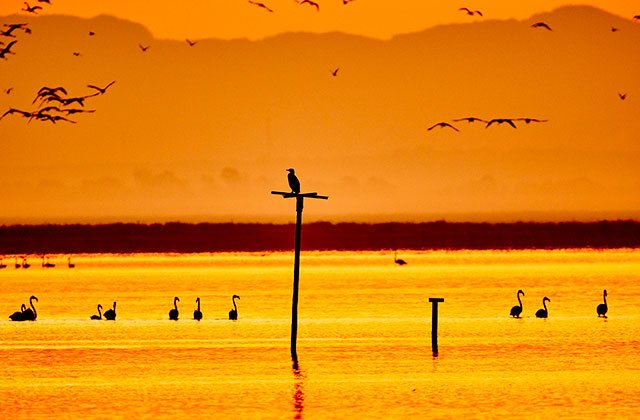
Doñana
This gem of nature is considered the largest natural reserve in Europe. In this mosaic of ecosystems, one can find three land types: marshes, live dunes and stabilised sands, or “preserves”. Here one can find a great variety of birds and mammals, with large populations of both. If you decide to visit this World Heritage site, know that each time you do, you will see it in a different light. The changing of the seasons give each time of the year a different feel, which can be enjoyed in a whole new way. The transition between two continents, Europe and Africa, allow Doñana to become an excellent point of observation for the more than 300 different species of birds that pass through here each year.
Moreover, in this environment you can see examples of the Iberian lynx and the imperial eagle, both of which are currently endangered. Do not forget to bring your camera with you. If you travel to this park, you’ll find an ideal landscape and light to take some beautiful snapshots. Doñana is cradled by Huelva, Cadiz and Sevilla, making it a meeting point for anyone who loves nature.
6. Antequera Dolmens Archaeological Site
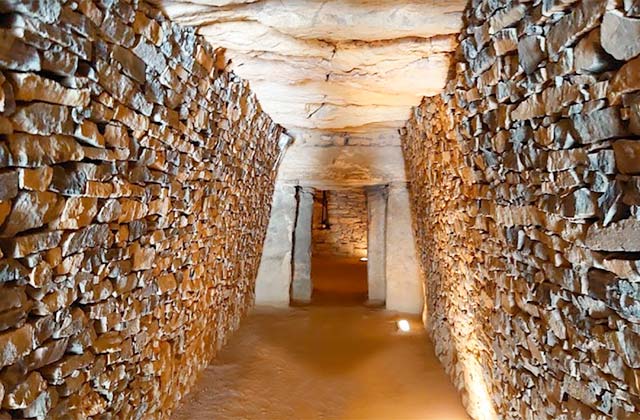
Dólmenes, Antequera
The Antequera Dolmens Archaeological Site comprises the Menga, Viera and El Romeral Dolmens and is considered one of the best and most famous exponents of European Megalithism. They are open on all public holidays, including local ones, with the exception of 1st and 6th January, 1st May and 24th, 25th and 31st December, when they are closed to the public. You can also book guided visits on the Government of Andalucia website.
Menga Dolmen
This dolmen’s exceptional value comes from its rare orientation with respect to the so-called Peña de los Enamorados. Menga is un tomb in the form of a corridor and comprises an atrium and a funeral chamber, and there is also a deep well at the back of the chamber whose existence is not yet understood.
Viera Dolmen
The Viera Dolmen, also known as Viera Brothers Cave or Small Cave, was given this name because it was discovered in 1903 by brothers José and Antonio Viera Fuente. It is a megalithic tomb made up of large vertical stone blocks called orthostates and other horizontals ones to close or cover it.
Tholos of El Romeral
El Romeral is formed by a narrow corridor 13 ft long, built with large sandstones that open up in two circular chambers. Though its official name is Tholos of El Romeral, it is also called El Romeral Dolmen.
7. Caliphate City of Medina Azahara

Medina Azahara, Córdoba
Medina Azahara, Madinat al-Zahra or Resplendent City was built by Abderramán III al-Nasir as an expression on land of the power he had after transforming al-Andalus into the Caliphate of Córdoba. However, legend has it that this city was built by Abderramán in honour of a slave called Azahara (the favourite of the Caliph).
The city constitutes a complete urban complex that gives us a complete idea of the life and material culture of a disappeared civilisation during its golden age. It is also the only example of a perfectly preserved Islamic city in this historical period within the European sphere. It is currently an extensive site, a third of which is still barely known after over 100 years of study.
8. FLAMENCO AND THE MEDITERRANEAN DIET: INTANGIBLE CULTURAL HERITAGE
The Mediterranean diet

Dieta Mediterránea
The Mediterranean diet is an appreciated cultural heritage that represents much more than a simple nutritional model that is delicious and healthy. It is a balanced lifestyle that includes a compendium of traditions and symbols related to crops and agricultural harvests, fishing and the raising of animals, and also to how food is transformed, cooked, consumed and shared. The Mediterranean diet is eating together, it is a time of social exchange and communication, and also of the affirmation and renewal of both family and group bonds.
7 ‘Superfoods’ you should incorporate into your diet
Flamenco

El Flamenco
Flamenco is to Andalucian culture what Guadalquivir is to Andalucia. Flamenco is the symbol that identifies us both inside and outside our borders. Flamenco is the backbone of our festivals, it is cultural industry, a subject of study, tourist attraction and, above all, it is the expression of Andalucian sentiment. It is one of the richest and most complex cultural and artistic manifestations on the planet. It is for these and many other reasons that Unesco considers it an Intangible Cultural Heritage.
WHERE TO STAY
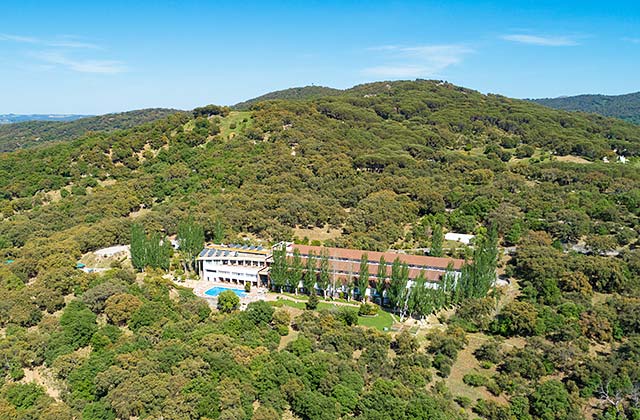
Hotel Fuerte Grazalema
If you wish to discover Andalucía, don’t hesitate to stay at the best hotels. Without a doubt, the best option is Fuerte Hoteles. The chain has facilities where, apart from the regular services, you can enjoy the best of each spot in the Andalucian geography. Its over 60 years’ experience is the best warranty so you can devote your time to discovering these unusual corners. Marbella, Conil, Grazalema, El Rompido or Torrox are some of the places where you can find amazing accommodation facilities near the spots we have recommended for you.
